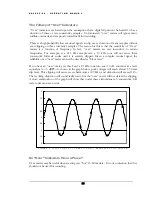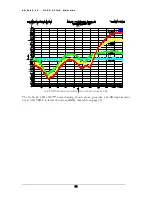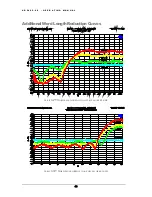
A D 2 4 0 2 - 9 6 - O P E R A T I N G M A N U A L
Appendix
3
Word Length Reduction
The AD2402-96 is equipped with two state of the art world length reduction systems: The
Benchmark NN™ (Near Nyquist) system, and the Benchmark NS™ (Noise Shaped) system.
Unlike most competitive systems, the Benchmark NS™ system is based upon the most
current psycho-acoustic models. Furthermore, both Benchmark systems are unique in that
they were optimized while factoring in the noise contribution of the recording environment.
The Benchmark NN™ and NS™ word length reduction systems are the result of a
cooperative effort between Benchmark Media Systems, Inc., and the Audio Lab at the
University of Waterloo in Ontario Canada. We would especially like to thank Stanley P.
Lipshitz Ph.D., John Vanderkooy Ph.D., and Robert A. Wannamaker Ph.D. for their
pioneering research and for their significant contributions to the early stages of this project.
Special thanks are also in order to Robert Wannamaker for creating and modifying the
mathematical algorithms and filter coefficients which are at the core of the Benchmark
NN™ and NS™ systems.
We have taken a new approach by optimizing word length reduction for use in three
different levels of ambient noise. The ambient noise in a live recording situation is very
different from ambient noise level in a studio, and neither can be considered insignificant
when reducing 24-bit recording to 16-bits. All prior word-length-reduction systems ignored
the effects of this ambient noise and were optimized for noise-free input signals. The
Benchmark NN™ and NS™ systems were mathematically optimized while calculating the
effects of ambient noise. Three levels of input noise were used and three different curves
were produced. NN3™ and NS3™ represent optimal solutions where system noise is
limited only by the 24-bit A/D conversion process. NN2™ and NS2™ represent optimal
solutions where the ambient noise is 6 dB higher than the converter noise floor. NN1™
and NS1™ represent optimal solutions where the ambient noise is 12 dB higher than the
converter noise floor. When properly used, this optimization can improve the dynamic
range of a finished 16-bit recording by several decibels.
What is the Appropriate Setting to Use?
In general, NN3™ or NS3™ should be used for extremely low-noise studio recording
environments, NN2™ or NS2™ should be used for live recording, while NN1™ and
35














































